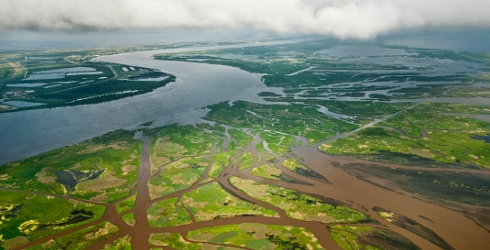
Estuaries are ecosystems where freshwater from streams and rivers meets marine waters of coastal bays and mixing occurs. Freshwater inflow is the term referring to the freshwater that flows from these streams and rivers into estuaries. Mixing in estuarine ecosystems occurs spatially and temporally from climatic influences including tidal action, seasonal variability and storms and is affected by the amount of seawater in the estuarine system which is governed by tides. Tides are defined as the periodic rise and fall of the surface of the sea driven by the gravitational pull of the moon and sun (Sumich 1996). Estuaries are influenced by the tides but are often somewhat protected tidal action (and tropical storms) by buffers further offshore such as barrier islands and peninsulas (Montagna et al. 2013a).
Estuarine ecosystems are among the most productive ecosystems on the planet, and in Texas house such species as blue crab (Callinectes sapidus), red drum (Scianops ocellatus), southern flounder (Paralichthys lethostigma), spotted seatrout (Cynoscion nebulosus), and many others. Some economically important estuarine habitats include tidal flats, salt marshes, seagrass beds, oyster reefs, and mangroves.
An estuary cannot properly function without freshwater inflows from rivers and streams. Freshwater inflows are important to estuaries because they provide low-salinity nurseries and transportation of nutrients, sediment, and organic material which effects species movement and reproductive timing (Montagna et al. 2002a).
Global changes largely caused by anthropogenic influences are altering the amount of freshwater inflows to estuaries (CAMEO 2008). Humans are diverting water from rivers and streams, decreasing the amount of flows making it to estuarine ecosystems. As the human population grows and the strain on water resources continues, the ability to effectively manage freshwater inflows into estuaries is becoming a priority worldwide (Montagna et al. 2013a).